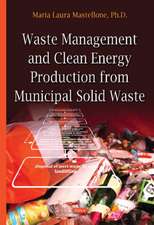Taming the Anarchy: Groundwater Governance in South Asia
Autor Tushaar Shahen Limba Engleză Hardback – 15 dec 2008
| Toate formatele și edițiile | Preț | Express |
|---|---|---|
| Paperback (1) | 410.67 lei 6-8 săpt. | |
| Taylor & Francis – 6 aug 2018 | 410.67 lei 6-8 săpt. | |
| Hardback (1) | 948.18 lei 6-8 săpt. | |
| Taylor & Francis – 15 dec 2008 | 948.18 lei 6-8 săpt. |
Preț: 948.18 lei
Preț vechi: 1156.31 lei
-18% Nou
Puncte Express: 1422
Preț estimativ în valută:
181.45€ • 189.20$ • 150.81£
181.45€ • 189.20$ • 150.81£
Carte tipărită la comandă
Livrare economică 21 martie-04 aprilie
Preluare comenzi: 021 569.72.76
Specificații
ISBN-13: 9781933115603
ISBN-10: 1933115602
Pagini: 324
Ilustrații: 22 line drawings, 10 tables
Dimensiuni: 156 x 234 x 20 mm
Greutate: 0.52 kg
Ediția:1
Editura: Taylor & Francis
Colecția Routledge
Locul publicării:Oxford, United Kingdom
ISBN-10: 1933115602
Pagini: 324
Ilustrații: 22 line drawings, 10 tables
Dimensiuni: 156 x 234 x 20 mm
Greutate: 0.52 kg
Ediția:1
Editura: Taylor & Francis
Colecția Routledge
Locul publicării:Oxford, United Kingdom
Public țintă
Academic and Professional Practice & DevelopmentCuprins
About the Author Preface Introduction 1. The Hydraulic Past: Irrigation and State Formation 2. Rise of the Colossus 3. The Future of Flow Irrigation 4. Wells and Welfare 5. Diminishing Returns?6. Aquifers and Institutions 7. Can the Anarchy be Tamed?8. Thriving in Anarchy Endnotes Glossary of Hindi and Other Terms References Index
Notă biografică
Tushaar Shah is a senior advisor at the International Water Management Institute.
Recenzii
'[A] sobering account of water depletion in the Indian subcontinent.'The Economist 'An important and...provocative book. Shah...exhibits in this book the rare skill of being able to write for both politicians and practitioners while maintaining the scientific rigor of the groundwater scientist that he is.'Irrigation Science'The contributions Taming the Anarchy makes to irrigation governance globally are far-reaching. It should be a vital resource for academics, water policy planners, NGO activists, environmentalists, and concerned citizens.'Human Ecology'[A] remarkable book. It provides a well-researched history and political analysis of the groundwater governance problem.'Journal of Natural Resources Policy Research'This book is likely to have a significant impact, both on decisionmaking and future research in the region. The book is the best assessment and analysis of irrigated agriculture in South Asia that exists...South Asia can be seen as a proving ground for the groundwater boom and bust cycles that will inevitably play themselves out in other regions.'Christopher Scott, University of Arizona'Very likely to be a book that will significantly shape the debate on India‘s irrigation economy, particularly the groundwater economy. The book will push many people to think 'outside of their box.'Peter P. Mollinga, University of Bonn'Taming the Anarchy is an authoritative treatise on groundwater governance that offers incisive insights and powerful ideas for planners and policymakers to rid the region of its groundwater madness.'Sudhirendar Sharma, d.sector.org
Descriere
In 1947, British India – the part of South Asia that is today's India, Pakistan, and Bangladesh – emerged from the colonial era with the world's largest centrally managed canal irrigation infrastructure. However, as vividly illustrated by Tushaar Shah, the orderly irrigation economy that saved millions of rural poor from droughts and famines is now a vast atomistic system of widely dispersed tube-wells that are drawing groundwater without permits or hindrances. Taming the Anarchy is about the development of this chaos and the prospects to bring it under control. It is about both the massive benefit that the irrigation economy has created and the ill-fare it threatens through depleted aquifers and pollution. Tushaar Shah brings exceptional insight into a socio-ecological phenomenon that has befuddled scientists and policymakers alike. In systematic fashion, he investigates the forces behind the transformation of South Asian irrigation and considers its social, economic, and ecological impacts.





















